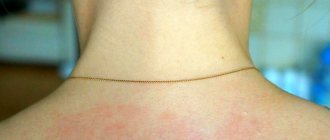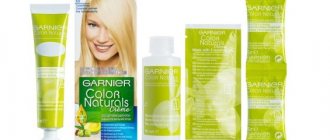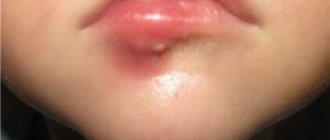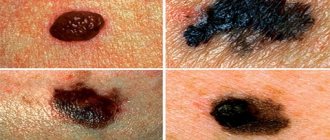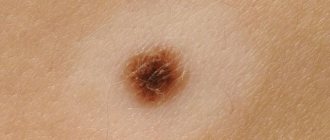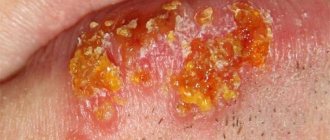The appearance of ulcers on the lips is a problem that occurs very often.
This unpleasant phenomenon may be due to various reasons, which explains the differences in therapeutic actions.
Therefore, it makes sense to understand what types of sores can occur in the mouth area and how they can be eliminated.
Even more interesting:
Apple cider vinegar for warts
Ovaries during menstruation
Types of rashes on the lips
Rashes in the area of both the mouth and lips can be different. They differ in their appearance, reasons for formation, and degree of danger. They may appear on the skin and mucous membranes.
Some types of rashes that affect these areas create discomfort and spoil the appearance, but do not pose a threat to health. Other varieties are a sign of disturbances in the functioning of the body, and therefore require identification of the causes and prompt treatment.
But before carrying out therapy, you need to find out the type of pathology.
The following types of such formations can be distinguished:
- Herpes. Herpes rashes can affect the area around the mouth, lips and oral mucosa. They look like small bubbles, which can be either single or multiple. Inside them there is initially a clear liquid, which becomes cloudy after a few days. Next, the bubbles burst and form a crust on the lips. This disease is accompanied by itching, burning, and swelling of the affected areas.
- Candidiasis . The disease occurs due to a yeast fungus that is constantly present in the human microflora. In the presence of favorable factors, the fungus actively multiplies, affecting different areas of the skin and mucous membranes. When it develops, a white coating forms in the mouth area inside the mouth and on the lips.
- Afty . Their formation is caused by the action of bacteria. At the first stage of their development, an abscess is formed. Subsequently, it deforms when it transforms into a circle with bloody borders and a white dot in the middle. The patient's temperature rises, the sensitivity of the damaged area increases, and the gums may bleed.
- Allergy . It often manifests itself as rashes of various types. They are caused by allergenic substances (medicines, food, etc.). Along with the formation of ulcers, other problems also appear - swelling of the affected surface, inflammation, pain. When ulcers rupture, erosions can form.
- Traumatic ulcers . Such abscesses are the result of careless actions - burns and mechanical damage to this area. They are formed as a result of bacteria entering the wound, causing an inflammatory process, which results in the formation of an abscess. To eliminate it safely, it is very important to contact a specialist.
- Stomatitis . This is a disease of the oral cavity in which ulcers form on the mucous membrane of the mouth. They look like small bubbles with a sharp top. They cause pain, and when large, they create significant discomfort. The damaged surface often swells.
It is quite difficult to distinguish one type of ulcer from another on your own. Therefore, it is recommended to consult a doctor even if the formation does not seem dangerous and does not cause serious problems. Sometimes a harmless symptom may be the only sign of a dangerous pathology that requires careful treatment.
Symptoms
The incubation period of herpes lasts 3-8 days.
After the incubation period, a person is concerned about the following symptoms:
- Pain at the site of the rash.
- The appearance of small bubbles.
- Redness and swelling at the site of the rash.
- Sometimes fever and weakness may occur.
When the first signs of this virus appear, it is necessary to take action, only this will help prevent rashes.
In addition to tingling in the area of redness, a person may experience itching all over the face. This symptom lasts about 1-2 days
It is important to know the signs of acute disease. At this time, the following symptoms may bother you:
- Fever, weakness.
- Damage not only to the lips, but also to the mucous membranes of the mouth and nose.
- The site where the rash appears is covered with small blisters that are very itchy and swollen.
- Within a few days, the rash dries out and crusts form in its place.
Locations
In most cases, herpes simplex is localized in:
- nasolabial part;
- around the wings of the nose;
- in the corners of the mouth;
- along the red border of the lips;
It may appear in one or several places at once, and there may be up to 10 small bubbles in the lesion.
Bubbles
Herpes blisters are filled with clear fluid, which is why they appear wet. If many of them form in one place, they can merge into one lesion with a diameter of up to 1.5 cm.
If bubbles have formed in areas not subject to friction, they will disappear within a week. A pigmented area forms at this place, after some time acquiring a normal shade.
If the rash has formed at the site of constant friction, then the bubbles spontaneously open, and erosion appears in their place. Its healing process varies from 10 to 14 days, unless additional infection occurs.
Herpes blisters can cause herpetic stomatitis, which affects the oral mucosa (cheeks, lips, gums). Such bubbles open after a few hours, and erosion remains in their place. After 3-4 days they are covered with film and gradually go away. If infection does not join this process, then stomatitis goes away in 1-2 weeks.
Soreness
Usually the pain at the site where the herpes appears does not go away until the wound has healed. It is one of the first signs of a viral infection of the lips, but in the initial stages it is not significant. The pain intensifies after the vesicles are opened, as an open wound forms in their place. After this, it becomes covered with a crust. If the rash appears in places of constant friction, then the person will be bothered by nagging pains, which will become less significant over time.
Causes of ulcers
Knowing the types of purulent formations in and near the mouth is important in order to understand what is happening in the body. But it is much more important to understand what the causes of their occurrence are, since the principle of treatment depends on them.
The formation of formations containing pus on the lips can be for various reasons.
These include:
- poor nutrition, leading to disruptions in the gastrointestinal tract and slagging of the body;
- use of low-quality hygiene and cosmetic products;
- hormonal imbalances;
- allergy;
- weakness of the immune system;
- problems with skin on the face;
- presence of bad habits;
- abuse of sweets;
- stressful situations;
- living in unfavorable conditions.
However, these features are only factors that can accelerate the progression of the disease. The underlying cause is most often due to an infection or virus entering the body. Although infection does not mean that problems will arise. Pathologies develop only when a provocateur and favorable factors are combined.
The most common diseases that are accompanied by ulcers on the lips and mouth are stomatitis and herpes. Therefore, it is worth considering the features of their development in more detail.
Stomatitis
With stomatitis, ulcers often form. They are usually located on the mucous membrane under the lips, but can form on the roof of the mouth, cheeks and gums. The main cause of this pathology is bacteria that penetrate the oral cavity. In the presence of wounds on the mucous membrane, these bacteria cause an inflammatory process and the formation of ulcers. There are also factors that contribute to the progression of stomatitis.
Among them are:
- failure to comply with oral hygiene rules;
- poor quality hygiene products;
- damage to mucous membranes;
- allergic reaction;
- an abundance of stress;
- physical exhaustion;
- lack of vitamins;
- use of harmful substances;
- chronic gastrointestinal diseases.
It is necessary to eliminate this disease under medical supervision, since due to improper actions it can become chronic.
Video from Dr. Malysheva:
Herpes
The development of herpes rashes on the lips and inside the mouth is caused by a herpes infection. The virus that causes the disease enters the body once and remains there forever. In the presence of favorable factors, it is activated, resulting in pathological symptoms.
These factors include:
- weakened immune system;
- poor nutrition;
- Unhealthy Lifestyle;
- physical and emotional exhaustion;
- infectious disease, etc.
The main symptom of herpes is the formation of small blisters. It is accompanied by itching. Gradually, the liquid contained inside the bubbles changes color to a darker one.
This is followed by rupture of the bubbles with the formation of erosions covered with crusts. When an abscess ruptures, the pathological contents come out and can affect neighboring areas, so caution is necessary during this period.
You should also not remove the crusts - this can lead to a relapse of the disease. In addition, a non-viral infection can get into the wound.
Treatment options
Features of therapy are determined according to the type of pathology. That is why with any rash it is necessary to go to the doctor so that he can establish a diagnosis.
The most commonly used method of treatment is medication.
Among the means used are:
- Antiviral. They destroy the infection and prevent its re-development. Some viruses cannot be destroyed, but antiviral drugs can prevent them from multiplying, which helps relieve symptoms. There are drugs of systemic and local action. These drugs include Acyclovir, Zovirax, Famphire, etc.
- Alcohol tinctures . They are effective in treating herpes. Such drugs can disinfect damaged areas, dry out ulcers and slow down their growth.
- Anti-inflammatory . This type of medication prevents the spread of the inflammatory process that often accompanies such phenomena.
- Healing . Thanks to them, damaged tissues are restored faster, and they also reduce the risk of scar development.
- Immunomodulatory . With their help you can restore immunity. This will prevent relapse of the disease.
- Antihistamines . They should be used when rashes of an allergic nature occur.
The listed funds can be used in combination with each other and separately. This is influenced by the type of disease. The treatment schedule is determined individually, as it depends on the severity of the disease.
It is common to use traditional medicine to get rid of ulcers on the lips. These can be herbal decoctions, essential oils, improvised means and much more. But they should be used with caution as they may not be suitable for the patient or his diagnosis. You need to make sure that there is no allergy to the chosen medicine and that its use is appropriate. Therefore, regarding folk remedies, you should also consult a specialist.
Video from Dr. Komarovsky:
Prevention measures
There are no measures that would guarantee the absence of such problems. But there are certain rules that can reduce the risk.
These include:
- Healthy lifestyle, giving up bad habits.
- Using high-quality cosmetics and hygiene products.
- Compliance with hygiene rules.
- Treatment of chronic diseases.
- Proper nutrition.
- Strengthening the immune system.
- Elimination of problems in the functioning of the gastrointestinal tract.
- Take medications only when necessary and as directed. Elimination of hormonal problems.
- Moderate physical activity.
- Avoiding stressful situations.
- Timely relief from infectious diseases.
Thanks to these rules, it is possible to prevent the formation of ulcers on the lips and their re-development after treatment.
A white transparent bubble on the inside of the lip most often does not cause much discomfort. But such a blister clearly signals some kind of problem in the body, and therefore cannot be ignored.
Causes of blisters on the inside of the lip
Only a doctor can determine the exact cause of a pimple in the mouth; self-diagnosis will not give true results. If a small bubble appears on the lip inside the mouth, you can contact your local physician, but it is better to go straight to a dermatologist or dentist.
Mucocele is the main cause of oral blisters
A water bubble inside the mouth may be a mucocele or a retention cyst , a cavity that contains fluid. Most often, the tumor is localized in the lower jaw, but sometimes it forms on the tongue, palate or cheeks.
Mucocele occurs due to careless biting of food, burn or other injury to the oral mucosa. With this pathology, a small bubble with liquid first forms, and over time it increases in size.
The neoplasm may appear due to injury to the salivary glands. Saliva enters the oral cavity through microscopic channels called ducts. If any duct is damaged or blocked, there is nowhere for salivary secretions to be released, so fluid accumulates, gradually forming a blister. The same principle of bubble formation is observed in sialolithiasis, a chronic inflammation of the salivary glands. But in this case, several white bubbles appear on the lips at once.
Mucocele easily goes away on its own, but only if it is not injured by teeth. If the teeth are constantly in contact with the bubble, the tumor will have to be removed surgically.
The surface of the mucocele is pearly or even bluish in color with multi-colored tints from the inside. The diameter of the neoplasm usually varies between 0.2–1 cm, but the blister can be larger if it appeared a long time ago.
Small pimples in the mouth as symptoms of serious diseases
Sometimes watery blisters on the lips signal more serious diseases:
- about diabetes;
- about AIDS;
- about oral tuberculosis;
- about syphilis.
If the neoplasm is a symptom of one of these pathologies, then it is not the tumor that needs to be treated, but the underlying disease. Before prescribing drugs to treat dropsy, the doctor will ask the patient to donate blood for biochemistry. It is through these tests that the presence of a serious systemic illness will be revealed. Further diagnosis depends on the general clinical picture and symptoms of the disease.
Other causes of pimples on the oral mucosa
A blister can form on the inside of the lip for the following reasons:
- Stomatitis that occurs due to poor oral hygiene, injuries, allergies to toothpaste, dental diseases, poor diet, decreased immunity, bad habits and hormonal changes associated with puberty, pregnancy or menopause.
- Herpes, which appears due to infection of the body with the corresponding virus. It can appear both outside and inside the mouth.
- Candidiasis, which is activated due to long-term treatment with antibiotics or the installation of unsuitable dentures.
- More serious infections: herpes zoster, pemphigus.
Features of appearance and diagnosis of neoplasms
In order to determine the true cause of the elevation of the mucous membrane in the mouth, it is necessary to look at it from the outside in daylight, although often at first glance all the changes in the mucous membranes are very similar, but there are still differences.
The bubble occurs with scarlet fever, food allergies or when using low-quality toothpaste.
Types of skin changes that may occur on the surface of the oral cavity:
- A spot is a change in skin color that does not rise above the surface of the skin. The cause may be a banal allergic reaction.
- A papule is a small spherical formation on the mucous membrane that is completely filled with fluid. It often has a transparent color and is accompanied by a slight inflammatory process around it. The cause of this change may be an injection or scratch from mucous food.
- A tubercle - in appearance it is very similar to a papule or vesicle, but does not contain liquid inside. Unsuccessful biting of the cheek between the teeth can provoke prolonged healing of the wound, which will lead to the formation of a tubercle.
- A node is a dense formation that does not contain fluid and rises very much above the surface of the skin. On palpation, the node is clearly palpable and often has a spherical shape. This picture occurs with pathology of the salivary glands. It is worth contacting an oral and maxillofacial surgeon.
- A blister is a superficial formation, upon examination of which one can see the accumulation of fluid under the top layer of the skin. In the case of the oral cavity under non-keratinizing epithelium. This pathology occurs after a burn from hot food or air.
- A vesicle is a papule that has a capsule of liquid on its surface. More often, this liquid is clear or white.
- An ulcer is a round wound that has a depression inside and rough edges. Can be of various sizes. The cause of an ulcer can be a lot of local and general diseases, so if an ulcer does not heal for a long time, you should consult a dentist or surgeon.
Each of the formations has its own reason for its appearance, which greatly influences further treatment.
Blisters on the mucous membrane of the lips in children
Dropsy appears on the lips of children for the following reasons:
- In newborns, blisters are often caused by excessive sucking during feeding (“food blister”). Such formation disappears on its own without any consequences.
- Bubbles with purulent contents indicate aphthous stomatitis.
- A large number of small white blisters on a child’s lips indicates the presence of a serious illness: chickenpox, measles or rubella.
If a pimple appears on the mucous membrane of your baby’s mouth, you don’t have to wait for it to go away on your own. It is better to contact your pediatrician immediately.
Are herpetic rashes an incurable diagnosis?
It is possible to cure a recurrence of herpes, but it cannot be completely eradicated. There are vaccinations against herpes that help reduce the incidence of the disease. Such vaccinations are carried out if the patient has not had a relapse for 1-1% of the month.
Herpes on the lips is otherwise called colds. This is true, because the main reason for its development lies in decreased immunity, respiratory diseases, etc. To prevent dangerous consequences, any manifestations of herpes should be treated in a timely manner and not allowed to affect other areas of the body.
Auxiliary symptoms
A blister that has appeared on the lip on the side of the mouth cannot but bother the owner. If the cause of the tumor is an injury, the patient will feel a gradually subsiding acute pain. The mucous membrane will begin to swell and turn slightly red. Slight hyperthermia (heating) of the tissue at the site of injury, burning and itching are possible. Some patients experience fever accompanied by chills.
Regional lymph nodes enlarge and may become too sensitive to touch. Such a symptom may appear immediately after a pimple appears on the oral mucosa.
Signs and symptoms of mouth blisters
The causes of bloody and watery blisters in the mouth can vary. All of them are united only by the appearance of transparent blisters on the cheeks, tongue or gums. Serous exudate accumulates in each vesicle.
Reference. Regardless of the disease that caused the appearance of blisters, in its acute course, malaise, weakness, fever, swelling, the formation of grouped or single blisters, the appearance of ulcers at the site of burst blisters, loss of appetite, pain or itching, and an unpleasant odor are observed.
Sometimes general malaise is accompanied by enlarged lymph nodes.
Treatment Options
A small blister on the lip inside the mouth may disappear on its own , usually 20–60 days after the development of the tumor. But with weak immunity and the presence of concomitant diseases, the pathology can become chronic. In this case, even the surgical operation performed does not guarantee the complete disappearance of the blister. It will be deleted, but after some time it will appear again. Therefore, before radical intervention, it is better to try more gentle methods of therapy; for many patients they will be much more effective.
Medications must be prescribed by a doctor, since there is no universal cure for blisters on the oral mucosa. Each pathology has its own treatment protocol. Self-medication can lead to the pathology becoming chronic: blisters will pop up almost every day.
Drug names
When patients develop watery herpetic blisters, they are prescribed antiviral drugs:
If water bubbles appear on the lips of a pregnant woman, the doctor will prescribe gentle therapy: treating the painful area with Oxolinic, Alpizarin or Tromontadine ointment. In consultation with your doctor, it is possible to use Acyclovir. Herpetic infection is not particularly dangerous for the fetus if treated correctly.
In parallel with antiviral drugs, it is necessary to use drugs to improve the condition of the immune system: Imudon, Aflubin. Sometimes patients are prescribed vitamin injections. To activate local immunity, you can smear the inside and outside of your lips with aqueous vitamin solutions.
If a person has caries, it must be cured, and the oral cavity itself must be sanitized. After this, you need to periodically treat the mucous membranes inside and outside the mouth with antiseptic drugs:
To prevent the development of complications and anaphylactic shock, the doctor may prescribe the patient weak antihistamines, for example, Diazolin. If blisters in the mouth appear due to allergies, the patient will be prescribed stronger antihistamines: Suprastin, Zodak, Erius.
The transparent bubble (ball) on the inside of the lip does not hurt so much that painkillers are required. But sometimes medications based on lidocaine may be prescribed. They are usually indicated for patients with a low pain threshold and high sensitivity.
Antibacterial therapy for the occurrence of vesicular neoplasms on the lower or upper lip is needed only when a secondary infection occurs. Most often, blisters and pimples on the oral mucosa can be cured without antibiotics. There is only one exception - if a pimple appears on a patient with AIDS or tuberculosis, antibacterial agents will definitely be needed.
Surgical removal of the resulting blister
If a blister that pops up on the lip inside the mouth does not go away within a month, you will have to remove it with a scalpel or laser. You cannot open the bladder yourself; illiterate actions can lead to infection of the wound and a general deterioration of the condition.
In the clinic, tumors in the mouth are removed under local anesthesia; the operation is quick. Sometimes doctors decide not to remove the bubble, but to form a new channel for the removal of saliva.
Surgical intervention is indicated for mucocele and if the cause of the appearance of blisters on the lips is trauma, but opening herpes blisters is useless: the balls will only thicken and become more painful. Other types of dropsy are also best treated with medications.
What to do at home
Most often, the following folk remedies are used to combat white blisters on the inside of the lip:
- lotions from calendula tincture;
- applications based on sea buckthorn oil;
- oral baths based on bee products;
- ointments based on butter and propolis.
In addition, you can rinse your mouth with chamomile decoction or soda solution 4-5 times a day to prevent infection of healthy areas of the mucous membrane inside and outside the oral cavity. But using exclusively traditional medicine to treat tumors in the mouth is dangerous and simply unacceptable; they must be combined with medications.
A clear water bead can form on the inside of the lower lip for a variety of reasons. Whatever blisters pop up in your mouth, you need to go to a dermatologist or dentist, and then follow their recommendations. Any pimple that pops up in the mouth requires attention, diagnosis and timely treatment.
Every person wants to look attractive. This is especially true for representatives of the fairer sex, who carefully monitor their appearance.
It is very unpleasant if an abscess appears on the lip - you want to cure it quickly. But sometimes it occurs again and again, or, worse, turns into something more serious.
How to relieve pain?
There are many creams and ointments that can be purchased at pharmacies with or without a prescription. You can use over-the-counter drugs such as magnesium hydroxide, Kamistad, Anbesol. Remember that when purchasing a medicine, you must carefully study and follow the instructions for use to achieve the desired result. Lidocaine is sometimes used to relieve pain. However, teenagers or young adults under 20 years of age should not take aspirin.
- Avoid kissing infected loved ones
- To prevent further irritation and pain, avoid acidic foods and spices (ginger, cinnamon)
- You can put ice cubes and keep them on the ulcers until they melt.
- Brush your teeth regularly and gently using Sensodyne/Biotene (toothpastes) with a soft brush
- Rinse your mouth frequently using warm salt water or baking soda (1/2 teaspoon per glass of water) for a soothing effect.
- Apply a pinch of magnesium hydroxide to the sores several times a day.
As for magnesium hydroxide, we sell it in powder form, most often used as a laxative. In the West, quite popular, in particular for stomatitis, is an external remedy such as “Milk of Magnesia”, which is usually translated as milk or milk of magnesia. An analogue can be easily prepared from powder purchased at a pharmacy; it is enough to dilute it with a little water, but so that the color remains white. According to other recommendations, it is permissible to apply the powder directly to the sores.
Possible causes of ulcers on the lips
According to the International Classification of Diseases, 10th revision, an abscess of the lower or upper lip (ICD 10) is not assigned a specific code. There is only a general group of diseases - skin abscess, boil, carbuncle with code L02.
The presence of an abscess or abscess creates certain discomfort for its owner. In addition to difficulties with eating (if the tumor has formed on the inside of the lip), the abscess also causes cosmetic discomfort, because it spoils the appearance of the face.
The reasons why an abscess or boil occurs on the lip include:
- development of a viral infection in the body;
- incomplete compliance with personal hygiene rules or lack thereof;
- mechanical or chemical injury;
- birth defect;
- the presence of a malignant tumor in the oral cavity.
The development of furunculosis can occur as a primary pathology or act as a symptom of another disease, for example, an allergic reaction to an irritant. When infected with a staphylococcal infection, a boil outside or inside the lip is a constant companion to the pathology.
Other provoking factors include:
- using expired cosmetics, especially lipstick;
- using toothpaste that has an irritating effect on the dermis;
- herpetic lesion that was treated incorrectly;
- poor-quality cleansing of the skin before bed;
- increased facial sweating.
The appearance of an abscess occurs due to blockage of the sebaceous glands with dirt, dust, and particles of dead epithelium. At the initial stage, you can observe the formation of a blackhead, which as it develops turns into a white pimple.
Photo: development of an abscess on the lower lip - boil:
If the piercing festers, this may indicate insufficient qualifications of the master who performed the piercing, as a result of which the wound became infected. Failure to follow the rules of postoperative care can cause the development of the inflammatory process.
To some extent, piercing is a surgical intervention, since during the puncture process the integrity of the skin changes; the master penetrates inside the body, namely, deep into the epidermis, which can cause undesirable consequences. Therefore, after the procedure, it is important to prevent moisture from entering the wound until it heals, as well as to exclude exposure to wind and frost. In addition, treatment with antiseptic agents is required.
Chemical
- Sharp acute pain after acid or alkali enters the oral cavity, which almost always have a very characteristic taste and smell.
- Swelling, with clearly visible boundaries of the lesion.
- A blister or many blisters that merge with each other, or ulcerations of the palate with areas of peeling skin in the form of blisters.
- Long-term recovery is accompanied by pain almost throughout, and scars may remain.
Important. Chemical burns are dangerous because the depth of the damage is very difficult to determine; the substances often destroy not only mucous membranes, but also hard tissue and bone. Sometimes, to eliminate the consequences, not only long-term treatment is required, but also surgery to remove colloidal scars.
Types of rashes
A neoplasm on the mucous membrane on the outside of the lower or upper lip may have a different appearance based on the cause that contributed to its occurrence. In most cases, a preliminary diagnosis can be made based on external clinical manifestations.
White pimple
A white pustule is an omentum or a closed comedon, which does not pose a threat to the health of its owner. It is formed due to blockage of the sebaceous gland duct by keratinized epidermis or sebum.
The surface of the lip itself does not suffer:
When white pimples are localized on the outer or inner area of the lips, on the mucous membranes of the mouth, or on the tongue, we can indirectly speak of stomatitis, which requires competent therapy.
In the photo there is stomatitis on the lower lip:
Purulent abscess
Increased production of sebum, excessive accumulation of keratinized epithelium, which is complemented by the addition of a secondary infection, is characterized by the appearance of an abscess. When a white tubercle forms in the center of the neoplasm, we can talk about the complete maturation of the abscess. After the breakthrough, the damaged area begins to heal.
An abscess can also be a boil, which forms against the background of an inflammatory process in the hair follicle and nearby sebaceous glands. In common parlance they are called boils. Most often they occur in areas with vellus hair - on the face, limbs.
A serious pathology is a carbuncle - a neoplasm that forms against the background of inflammation of several hair follicles and sebaceous glands located next to each other. In addition to the nasolabial triangle, such growths appear on the neck, back, and buttocks.
Lipoma
This is not a pimple or an abscess at all, but sometimes, without understanding it, they try to squeeze it out, which is completely useless. A dense and immobile lump under the skin is considered a benign neoplasm - a lipoma, which can be localized on the outskirts of the lip. It is formed by fatty exudate mixed with dead epithelial cells.
Such growths are not dangerous, however, if they are located on the lip, there is an increased risk of injury, for example, during kissing, cosmetic manipulation, or chewing.
Possible complications of abscesses
If you squeeze out an abscess on the lip incorrectly, or if you do not adequately treat a purulent wound, the risk of its increase in size and generalization of infection increases.
Complications are divided into 3 groups:
- arising directly in the area of pus on the lip, these include phlegmon - an erysipelas inflammatory process with the spread of infection and extensive damage to the epidermis on the face;
- covering other nearby areas (the development of phlebitis, thrombophlebitis, lymphadenitis, lymphangitis in the cervical region may be observed);
- generalized, in which pus from the lower or upper lip spreads through the bloodstream to distant organs and systems of the body.
The latter negative consequences are considered the most dangerous and in some cases can lead to death. Due to the generalization of the infection, the development of pyoderma, osteomyelitis, bacterial damage to internal organs, and abscesses within the body can occur.
Intracranial complications of an upper lip abscess include meningitis, meningoencephalitis, brain abscess, toxicoinfectious edema of the meninges, and cavernous sinus thrombosis.
In the photo there is an abscess of the lower lip:
What to do and how to treat an abscess on the lip inside and outside?
First of all, it is necessary to determine the cause of the sore on the lip. Based on the primary source, etiotropic treatment is prescribed. Symptomatic remedies that accelerate the maturation of the tumor and help remove pus without spreading the infection will help eliminate external manifestations.
Medicines
If signs of an inflammatory process occur, the use of antiviral and anti-inflammatory drugs is prescribed. To improve the immune system, immunostimulants are taken, especially if pustules have formed on the child’s lips. If you have pain symptoms, you are allowed to take a painkiller.
Local therapy involves the use of gels, solutions and ointments:
- antiseptics for rinsing the mouth (if the abscess occurs not only on the lip, but also in the mouth);
- enzymatic local wound treatment products;
- vitamin preparations for applying compresses to the affected area (for example, B12);
- antiseptics for applying compresses to the abscess (Chlorhexidine, Furacilin, hydrogen peroxide).
To accelerate the maturation of the abscess, Salicylic ointment or Baziron ointment is prescribed. When a viral infection activates in the body, Zovirax or Acyclovir ointment will be effective. Antibiotics are prescribed Cefixime and Amoxiclav.
If the lip inside is festering from a blow, in combination with drug treatment, the doctor may prescribe physiotherapeutic procedures, for example, UHF and electrophoresis.
After the abscess breaks through, novocaine and an antibiotic are applied to the affected area. Such remedies help eliminate pain and prevent the generalization of infection.
Traditional methods
Many folk remedies are no less effective than ready-made medications, for example, antibacterial ones. Brewer's yeast, onions, and honey help speed up the ripening of the abscess and draw out the purulent exudate. However, their use in the treatment of skin diseases is prohibited in case of hypersensitivity to the substances included in the composition.
Since abscesses and boils often occur against the background of metabolic disorders in the body and weakening of the protective function, increased immunity is required. Brewer's yeast contains useful components (zinc, magnesium, calcium, iron, etc.) that help quickly cure an abscess and prevent its recurrence.
Take yeast 2 times a day before meals, about an hour before, 1 tbsp. l. Contraindications include hypersensitivity to components and the development of kidney disease.
No less effective is honey, from which a medicinal cake is prepared: the beekeeping product is mixed with flour and grated laundry soap in equal proportions. The result should be a product that resembles plasticine in consistency. The cake is applied as a compress to the boil, fixed with a band-aid and left in place for 3 hours.
You can speed up the opening of an abscess using baked onions. One head is baked, cut into pieces, and after cooling, applied to the affected area, secured on top with a band-aid. Carry out the procedure before bedtime, keeping the compress on until the morning.
Thermal
Such damage includes microtraumas resulting from drinking too hot tea or coffee.
The duration of wound healing from thermal exposure directly depends on the depth of the lesion; they take quite a long time to heal.
Depending on the degree of damage, sensations change:
- In the first degree, the burn occurs only on the outer layer of the tongue. A person experiences pain, the color of the tongue changes to red and after some time begins to swell. Rinsing the mouth with antiseptic solutions will help speed up the healing process.
- In the second degree, the sensations become more painful, since not only the outer but also the inner layer of the tongue is affected. The formation of blood blisters, swelling of the tongue and its redness are also observed. In this case, it is recommended to seek medical help as soon as possible so that the doctor removes the lump, washes the affected area and treats it with an antiseptic.
- In the third degree, the burn penetrates deep into the tongue, the burned surface becomes black. The patient complains of a feeling of numbness of the tongue and severe pain. The help of a doctor is mandatory here, otherwise there is a high probability of death.
We suggest you familiarize yourself with Antibiotics for tongue inflammation
Preventing acne
First of all, it is recommended to observe the rules of personal hygiene. It is necessary to carry out water procedures, wash your face and brush your teeth daily. This will avoid skin diseases, including abscesses and boils.
Other preventive recommendations include:
- avoiding lip injury;
- systematic strengthening of the immune system;
- maintaining a healthy lifestyle;
- elimination of bad habits, especially smoking;
- timely treatment of abrasions, cuts, wounds with appropriate medications.
By following these simple rules, you can minimize the risk of abscesses and more dangerous tumors on the lip. If you cannot avoid their occurrence, you should not self-medicate, but rather consult a doctor.
Preventive measures
The mucous membrane of the human oral cavity is a very thin and delicate anatomical formation. In just one day, she is exposed to multiple traumatic factors. Their reduction will be a reliable protection not only from the appearance of white blisters, but also from other severe lesions.
To avoid this you should follow some simple rules:
- visit the dentist regularly.
- carry out sanitation of the oral cavity.
- carry out high-quality oral hygiene.
- to refuse from bad habits.
- strengthen local and general immunity in every possible way.
- try to avoid infectious diseases.
- pay attention to occupational hazards.
- If you have a wound, try to avoid consuming hard and rough foods, which could further lead to injury.
It is important not to self-medicate. Sometimes even a little time lost is very important for a speedy recovery and prevention of more severe injuries.
